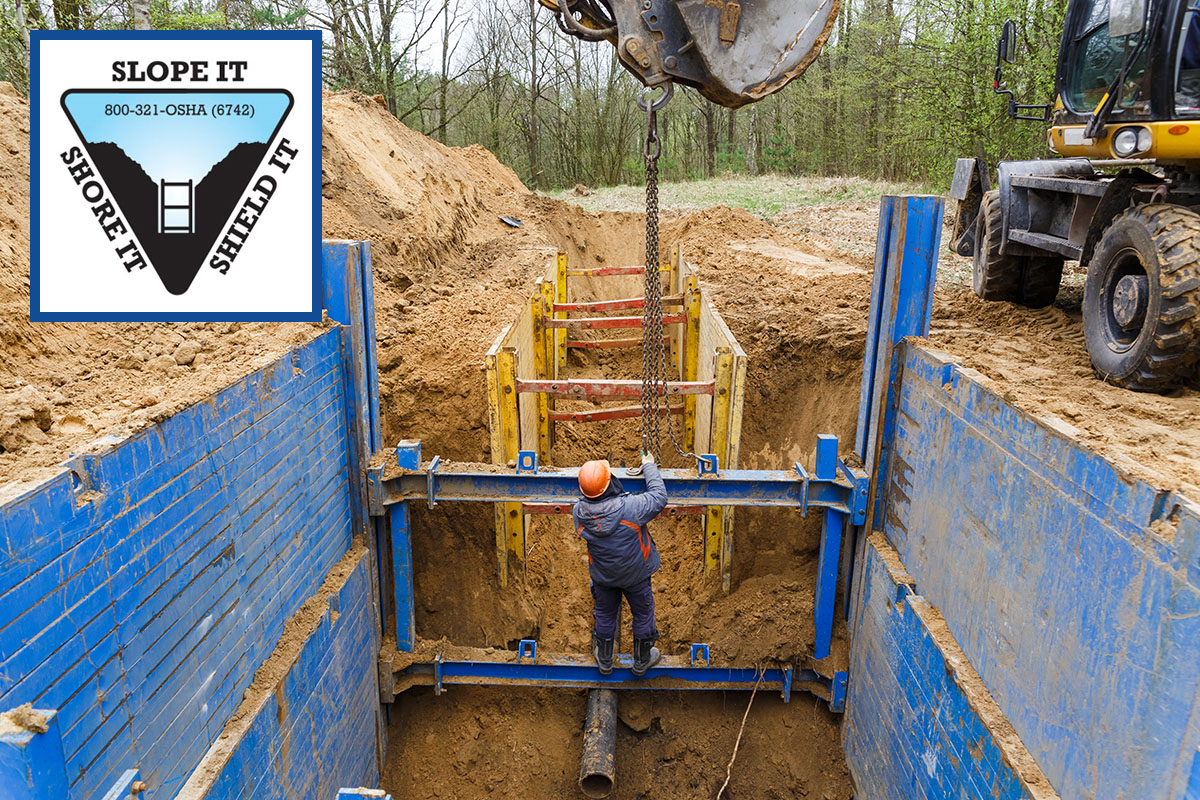
Excavation and trenching are among the most hazardous operations in construction. From 2011 to 2018, an average of eight Texans per year lost their lives to trenching-related accidents, according to the U.S. Bureau of Labor Statistics. Hundreds more are injured each year in excavation incidents ranging from falls, falling loads, toxic atmosphere exposure, electrocution, and mobile equipment accidents. Cave-ins, however, pose the greatest risk and are much more likely to result in fatalities.
To raise awareness of the hazards, OSHA encourages all employees exposed to excavations deeper than 5 feet (not in rock) to follow the three S’s of trenching safety: Slope It, Shore It, and Shield It! When applied to trench and soil excavation, these protective systems and other steps listed below can help ensure that the work is performed correctly and employees remain safe.
1Use protective systems
No one should enter a trench without clearance from a competent person. For trenches under 5 feet, protective systems are at the discretion of a competent person. Trenches between 5 and 20 feet are required to have protective systems that are installed under the supervision of a competent person. Trenches 20 feet deep or deeper require protective systems designed by a qualified person, usually a registered professional engineer.
2Slope the soil
Soil is categorized in decreasing order of stability: Stable rock (e.g., granite and sandstone); Class A (e.g., clay, silty clay, sandy clay, clay loam); Class B (e.g., angular gravel, silt, and silt loam); and Class C (e.g., gravel, sand, and loamy sand). The angle of the soil slope depends on the soil type. The trench can be dug with a vertical slope if the excavated walls are stable rock. As the soil type and stability decreases, so should the slope angle. OSHA requires that a competent person classify the soil and rock to determine how long it will stand up under its weight. Determining the type of soil on a site can prevent cave-ins and keep workers safe. Another option is to classify all soils as Class C, the least stable.
3Shore the walls
Shoring systems give wall support to prevent a trench collapse. Use hydraulic jacks, metal pressure plates, timber piling, or other recognized methods to protect large areas so crews can work inside or beside an excavation without danger of collapse.
4Use shielding (trench boxes)
Shielding, unlike shoring, does not prevent a trench collapse, but rather protects workers from the pressure and weight of soil in the event of a cave-in. One cubic yard of soil weighs on average 3,000 pounds, almost as much as a car. To stop movement if the earth starts to shift or cave in, ensure the contractor installs shielding according to OSHA regulations outlined in 29 CFR Part 1926.650-652 Subpart P-Excavations.
5Ensure a safe entry and exit
Keep ladders, steps, or ramps within 25 feet of all employees working in excavations four feet or deeper to ensure their safe access and egress (leaving). A competent person must inspect trenches at the start of each shift and following a rainstorm to ensure the trench is free of standing water, atmospheric hazards, or other dangers. Test for low oxygen and hazardous vapors and gases.
6Do not keep materials at the edge or above the trench
Keep surcharge loads (any load that could put extra pressure on the earth), including excavated materials and equipment, at least two feet from the trench edges. Never work under a raised load.
7Know where the underground utilities are located
The estimated location of utilities, such as sewer, telephone, fuel, electric, water, or other underground lines must be determined before excavation begins. Review OSHA regulation 1926.651 for more information. For help in locating utility lines, contact the Texas Railroad Commission, at 811 or 1-800-DIG-TESS (1-800-344-8377).
For more information on trenching and excavation training or confined spaces training, contact a DWC Safety Training Specialist at www.txsafetyatwork.com, safetytraining@tdi.texas.gov, or 1-800-2252-7031, Option 2.
